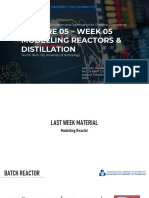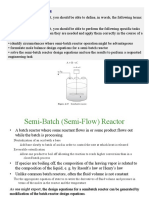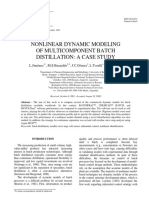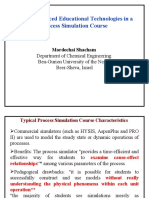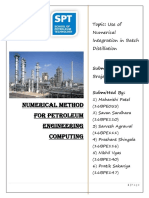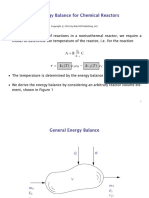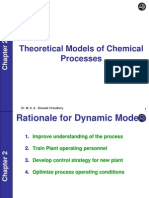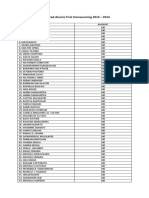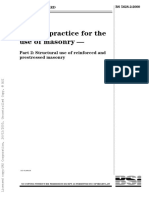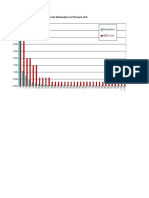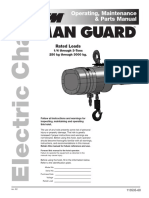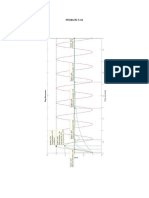0% found this document useful (0 votes)
15 views42 pagesWeek 6
The document covers modeling, simulation, and optimization techniques for chemical engineering, focusing on batch and semi-batch reactors, as well as binary distillation processes. It outlines the objectives, assumptions, and mole and energy balance equations necessary for developing models that optimize product yield and purity. The lecture is part of a course at Ho Chi Minh City University of Technology, presented by Lecturer Aqsha, Khoa Ta Dang.
Uploaded by
HẢI BÙI DUYCopyright
© © All Rights Reserved
We take content rights seriously. If you suspect this is your content, claim it here.
Available Formats
Download as PDF, TXT or read online on Scribd
0% found this document useful (0 votes)
15 views42 pagesWeek 6
The document covers modeling, simulation, and optimization techniques for chemical engineering, focusing on batch and semi-batch reactors, as well as binary distillation processes. It outlines the objectives, assumptions, and mole and energy balance equations necessary for developing models that optimize product yield and purity. The lecture is part of a course at Ho Chi Minh City University of Technology, presented by Lecturer Aqsha, Khoa Ta Dang.
Uploaded by
HẢI BÙI DUYCopyright
© © All Rights Reserved
We take content rights seriously. If you suspect this is your content, claim it here.
Available Formats
Download as PDF, TXT or read online on Scribd
/ 42
